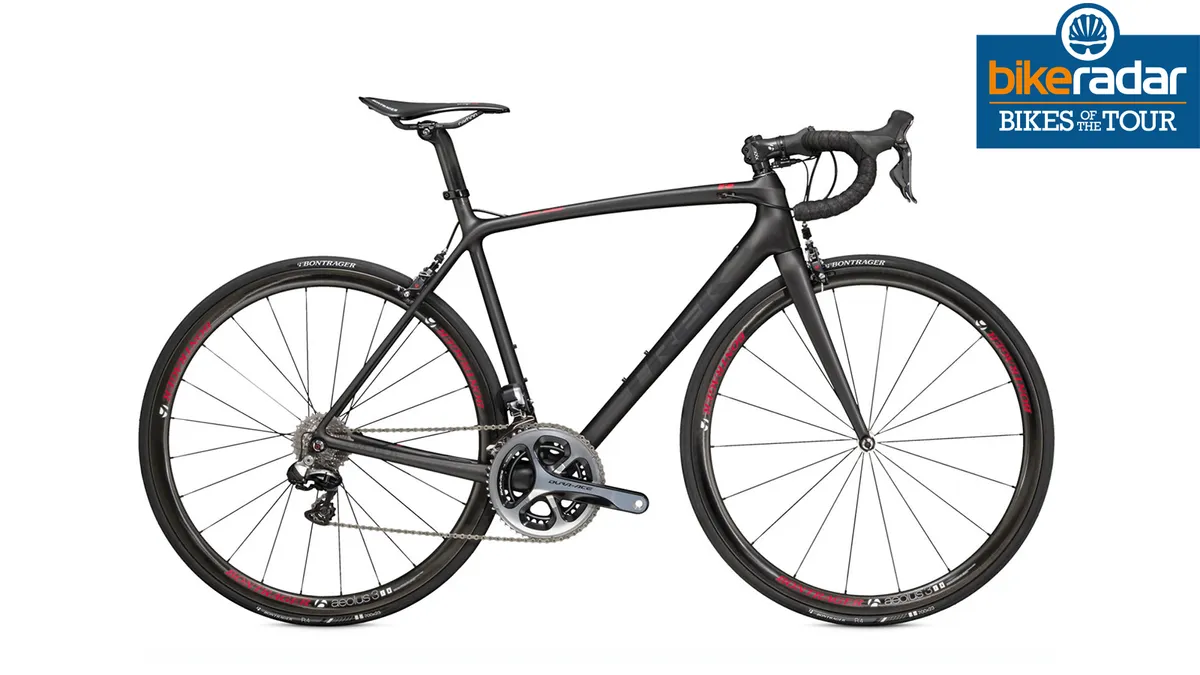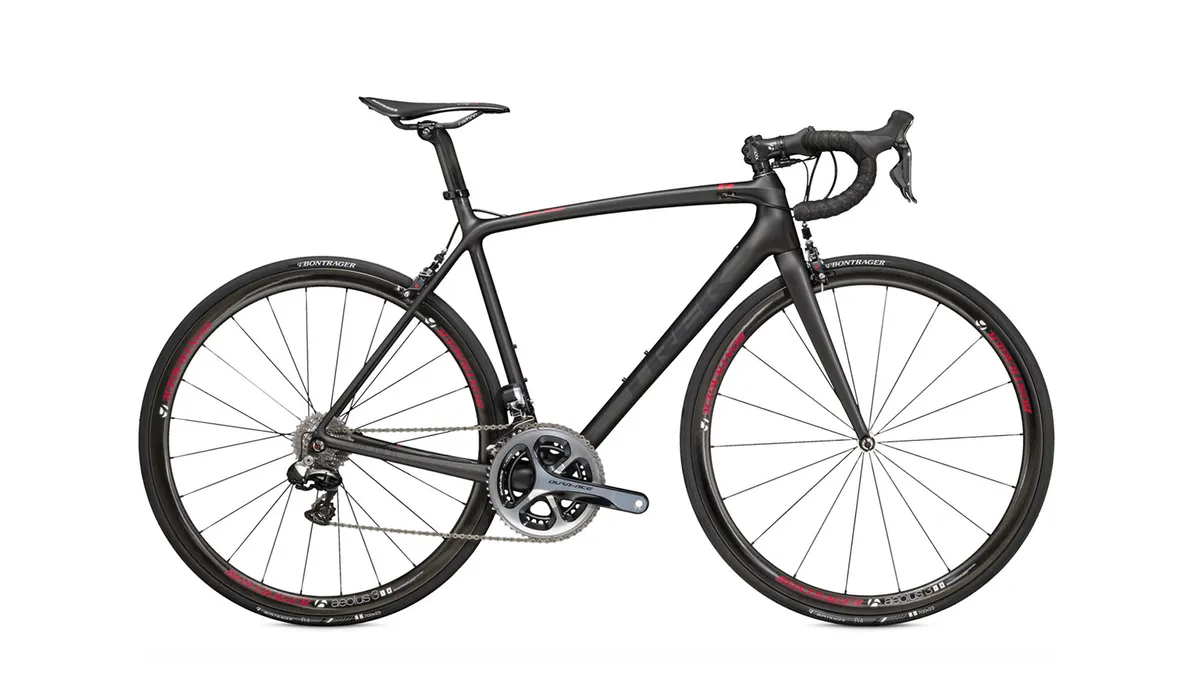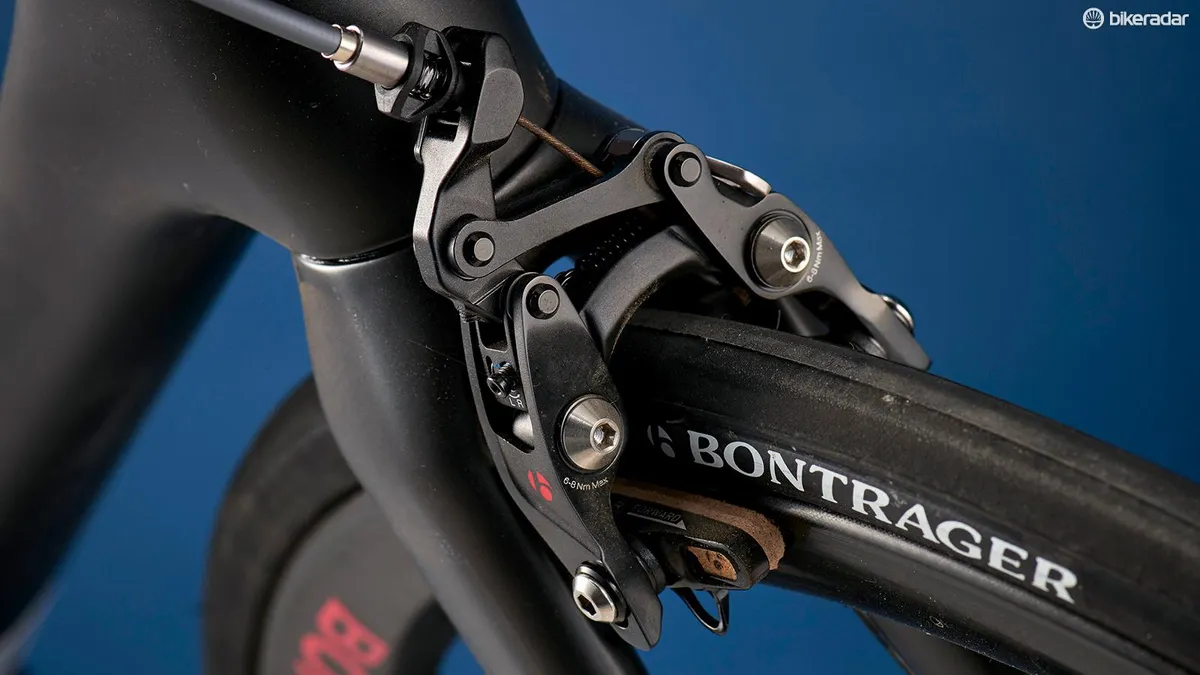Trek added the Émonda to its lineup just days before the Tour de France started in Yorkshire in 2014. With the now aero-optimised Madone and the comfort offering classics-biased Domane in the range, Trek’s designers saw the need for a super-light chassis for climbers. With the Émonda, Trek’s created one of the lightest chassis around – the 56cm frame weighs just 690g. That’s in the territory of high-end, low volume carbon creations from the likes of AX Lightness or Storck, and the fact it’s been delivered by a mass-market brand like Trek is impressive.
- Highs: Very low weight, great drivetrain and gearing, lovely handling too
- Lows: Old school cork brake pads lack bite
- Buy If: You’ve got pockets deep enough and you want to go uphill very, very quickly
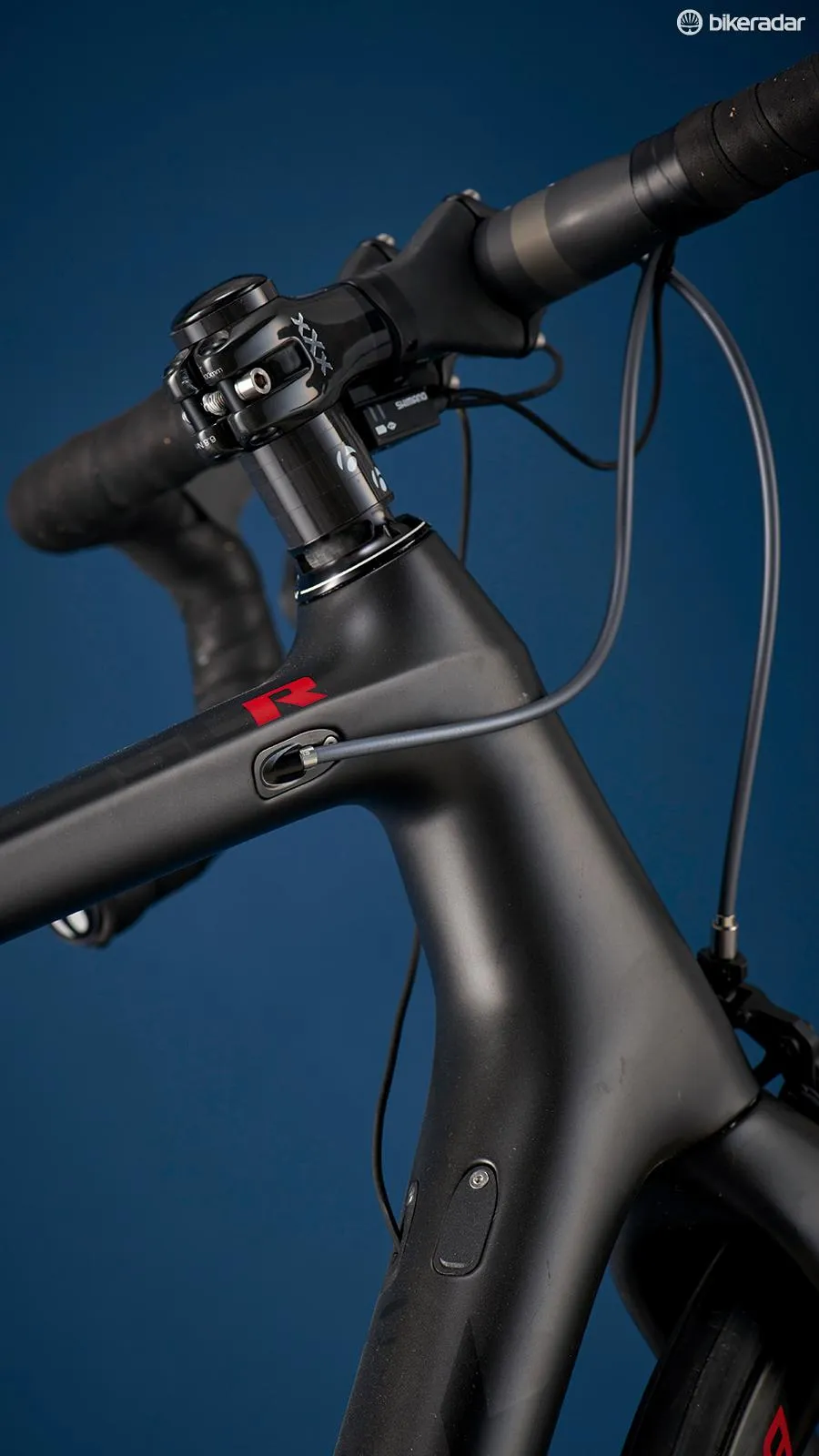
Details such as the oversized tapered head-tube and CNC-machined headset top bearing cover with milled holes help to shave grams
Trek says the frame is the most advanced version of its OCLV (optimum compaction low-void) carbon to date. The structure of the carbon layers is designed to offer the right amount of stiffness and compliance while reducing the content to a minimum. Trek hasn’t scrimped on details to reduce weight either. It’s continued with its 90mm wide oversized bottom bracket shell and oversized tapered head-tube, with the fork having the asymmetric steerer carried over from the Madone. It's also added neat touches like an integrated chain catcher on the bottom bracket shell and a DuoTrap ANT+ speed and cadence sensor, which is built into the non-driveside chainstay.
Trek has shaved grams elsewhere too – you’ll see neat details like a CNC-machined headset top bearing cover (with holes milled in it to reduce weight) and a switch from the already light Dura-Ace direct mount brakes to Bontrager’s Speed Stop brakes, which are multi-pivoted CNC’d marvels with fully adjustable leverage ratios. At 122g (including pads) they're 28g lighter than the DA brakes.
It all adds up to a seriously light bike. Our 58cm bike tipped the scales at 6.25kg, which is a way under the UCI’s 6.8kg limit, although adding pedals and bottles and cages will get it closer. It’s also worth noting that this bike comes with clincher wheels (always heavier than a tubular setup the pros will ride).
The SLR is available in two fits. Trek’s H1 is for riders with greater flexibility, so has a shorter head-tube, a lower stack and a longer reach, ideal for getting in a low-aero position. Ours came with the H2 fit, which is a little taller for reduced pressure on the neck and back, but don’t think of it as a leisurely position – Trek tells us plenty of its pro riders opt for H2.

The Di2 junction box sits neatly under the Bontrager carbon stem for easy accessibility
This lightweight bike rides brilliantly. Despite the low weight the Émonda feels rock solid – out of the saddle efforts are met with a bike that doesn’t waiver or flex when you’re honking on the bar attacking a climb. The Dura-Ace Di2 is flawless and the 50/34, 11-28 gearing is real-rider ready, offering a wide enough spread that’ll help anyone climb better.
The wide rim of the new Aeolus D3 wheelset shapes the R4 23mm tyres well, helping smooth out rougher surfaces. On truly rough stuff it does transmit a bit more noise, but not enough to become wearing on the rider. Some of our smaller testers tried the SLR and found it harder than our taller, heavier testers, but we think switching to a bigger volume 25mm tyre would help counter that.
On the flat the Émonda is rapid-aided by the wide, blunt, aero-shaped Aeolus wheels. They hit the current aero design trends spot on and we’re impressed by their stiffness and smoothness.
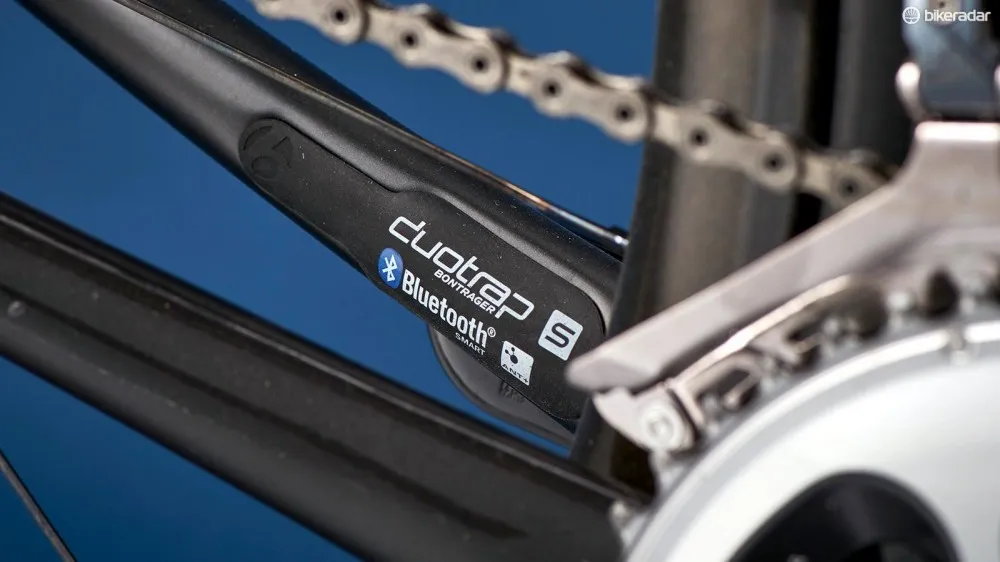
Bontrager's DuoTrap sensor transmits speed and cadence data to Bluetooth and ANT+ devices
Finishing kit comprises an excellent Bontrager XXX carbon bar, which has a great oversized top shape and super-compact drop that balances the stiffness/flex trade off to perfection, all but eliminating buzzy vibrations through the front end. At the back the seatpost is a dedicated external fit (like a standard seatpost in reverse). It’s designed to flex to aid comfort and is topped with the svelte, firm but comfortable Paradigm saddle.
The SLR is nigh on the perfect superbike, aside from one small yet significant flaw in its impressive spec. Get to the top of a climb and start to descend and things get interesting. The impressive wheels and great tyres give you all the velocity and grip you’ll need, but actuate the brakes and you’ll find a distinct lack in stopping power. It’s not the brake design but a combination of old-school cork pads Trek’s used and the carbon brake surface. Cork was originally used by the likes of Zipp, Hed, and Reynolds as a pad material because of its excellent resistance to heat build-up, but that was a few years ago.
The downsides are a hard feel, lack of bite and noise. Trek explained that it hadn’t been convinced by previously available carbon specific pads, but had just completed extensive testing and now gives the thumbs up to Swiss Stop’s Black Prince pads. We suggest you get your Trek dealer to make the switch before you buy.
The Émonda is a true great despite the pads. Its UCI baiting low weight is only part of the story of what is a superbly composed bike with pitch perfect handling and smooth riding.
